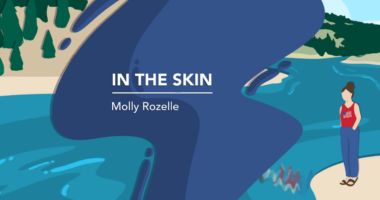First patients enrolled in trial of RLF-TD011 wound spray for EB
Proof-of-concept trial still recruiting for tests of Relief therapy

A proof-of-concept trial evaluating the effects of Relief Therapeutics’ antimicrobial wound spray RLF-TD011 — formerly known as APR-TD011 — in people with epidermolysis bullosa (EB) has enrolled its first three patients, the company announced.
RLF-TD011 is a highly pure form of hypochlorous acid, a chemical with broad-spectrum antimicrobial properties. It is approved and marketed as Nexodyn for the cleansing and moistening of chronic and acute wounds, as well as cuts, abrasions, burns and other lesions.
The investigator-initiated trial (NCT05533866) is now testing the wound spray in people with junctional EB (JEB) and dystrophic EB, known as DEB.
It’s recruiting up to 17 patients with JEB or DEB, ages 6 months or older, with wounds positive for Staphylococcus aureus and/or Pseudomonas aeruginosa bacteria.
“The results of this study will be most valuable for the swift, effective and efficient execution of our clinical development plan for RLF-TD011,” Nermeen Varawalla, MD, PhD, chief medical officer at Relief, said in a company press release.
Trial testing wound spray has enrolled three patients
Enrollment is ongoing at the Ann & Robert H. Lurie Children’s Hospital of Chicago, the trial’s single site. Amy Paller, MD, chair of the department of dermatology at the Feinberg School of Medicine at Northwestern University, will lead the study. More information is available on the trial page.
“EB is a rare, inherited skin disease characterized by widely distributed, painful, chronic wounds that easily become infected, resulting in an elevated risk of sepsis and death. As there is no cure for EB, a crucial element of patient management involves rigorous and timely wound care,” Paller said.
Patients will receive RLF-TD011 for eight weeks, and then be evaluated four weeks later. The trial’s main goal is to assess the therapy’s effectiveness in reducing bacterial colonization of partipants’ wounds.
“We are eager to assess the effect of RLF-TD011 on the microbiome [the collection of microbes] in colonized dystrophic and junctional epidermolysis bullosa wounds and determine tolerability, symptom improvement, reduction of lesion size and wound closure,” Paller said.
All study participants may continue treatment for six months in an open-label study extension.
According to Varawalla, the results of this trial will help inform the design of multicenter, pivotal studies to continue to assess the effectiveness of RLF-TD011 in controlling infection, avoiding chronic antibiotic use, promoting wound healing, and improving quality of life in EB patients.
We are eager to assess the effect of RLF-TD011 on … wounds and determine tolerability, symptom improvement, reduction of lesion size and wound closure.
In EB, the skin is fragile and prone to blisters, often causing open wounds that don’t heal easily and can become infected.
RLF-TD011 is a low pH formulation of hypochlorous acid, a natural antimicrobial produced by the immune system in response to infection. Developed with the company’s platform, called Techlo, it is a self-administered spray, meaning that skin contact — which can lead to contamination — is avoided.
In a preliminary clinical trial, RLF-TD011 led to an improvement in skin blistering and tissue repair in EB patients after two weeks of treatment, according to Relief. The treatment also was found to be safe and well tolerated.
RLF-TD011 was granted orphan drug status for EB by the U.S. Food and Drug Administration in 2019. That designation is intended to speed its development toward regulatory approval.







